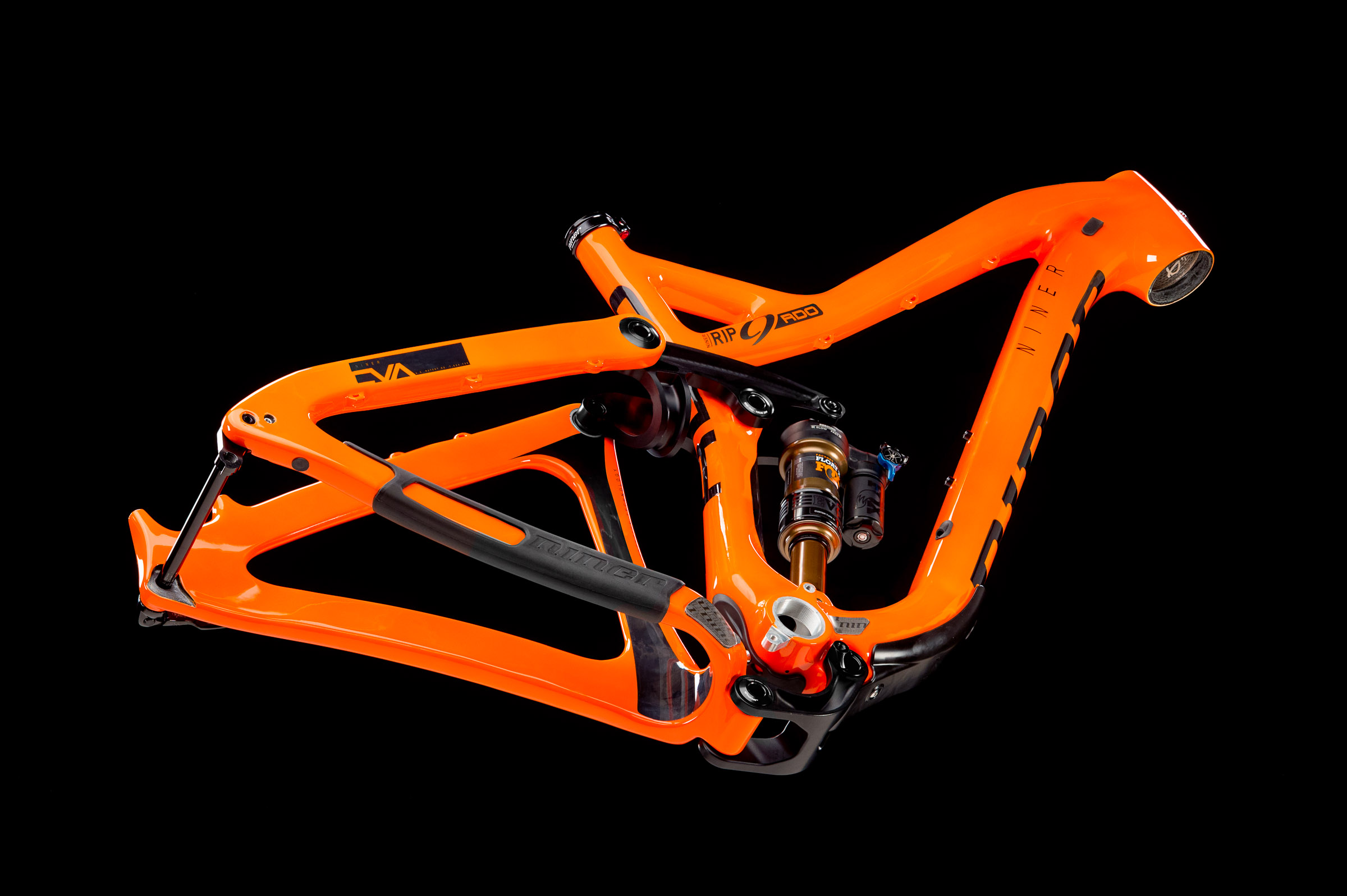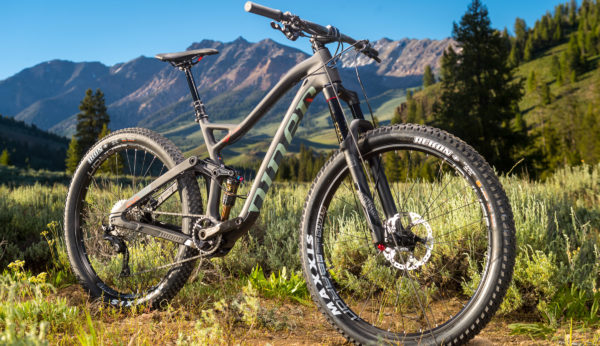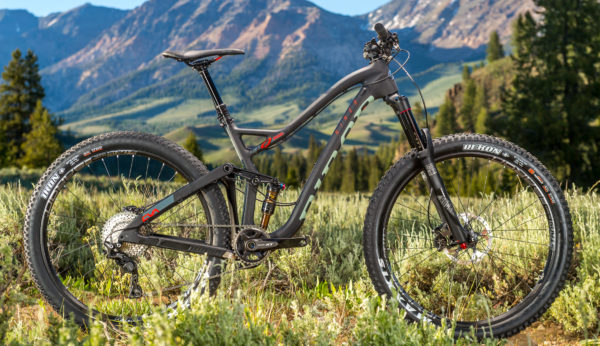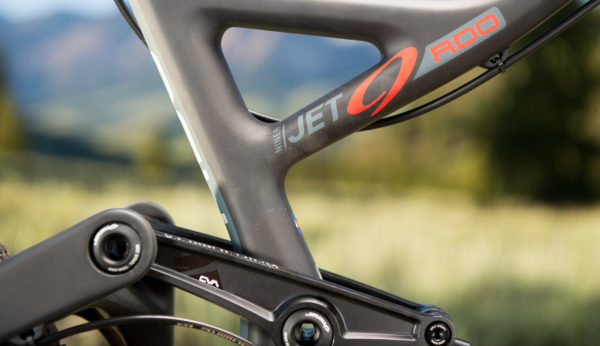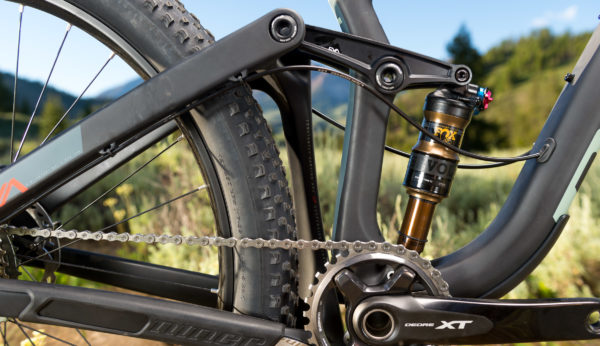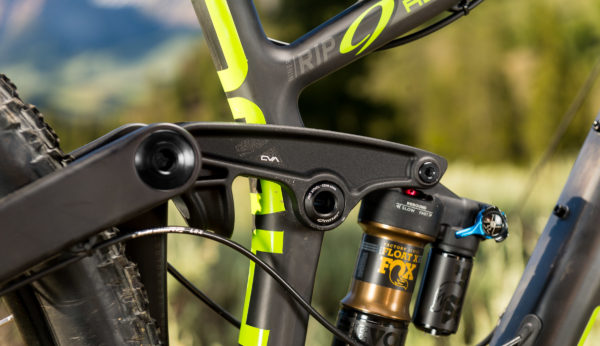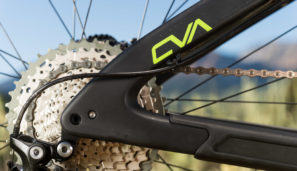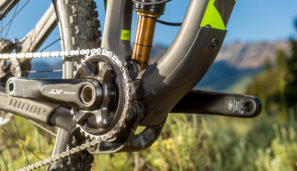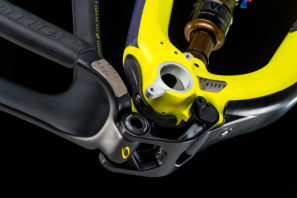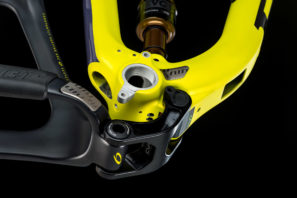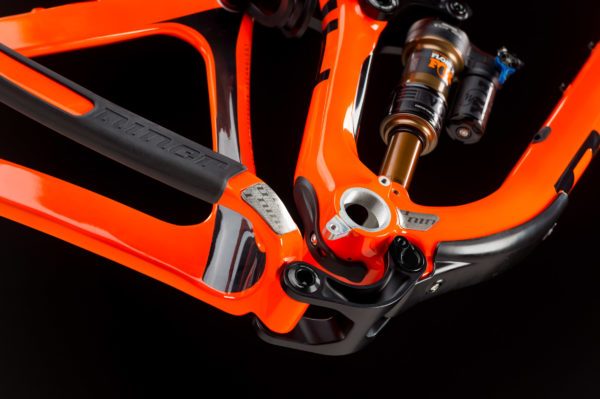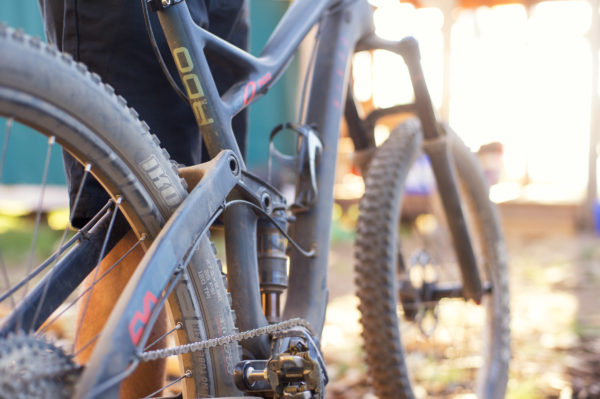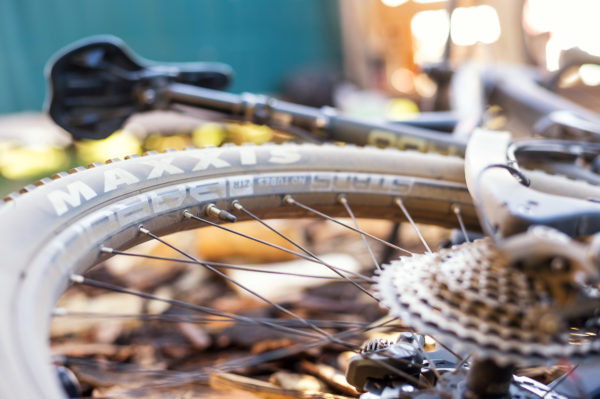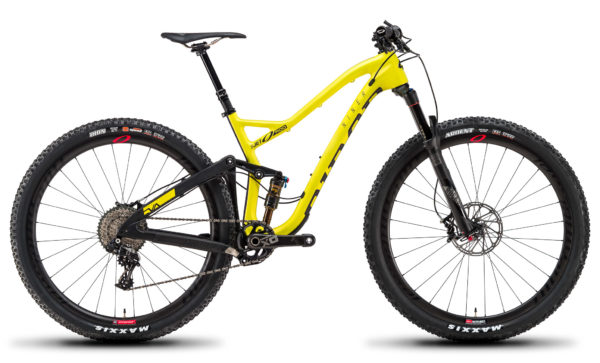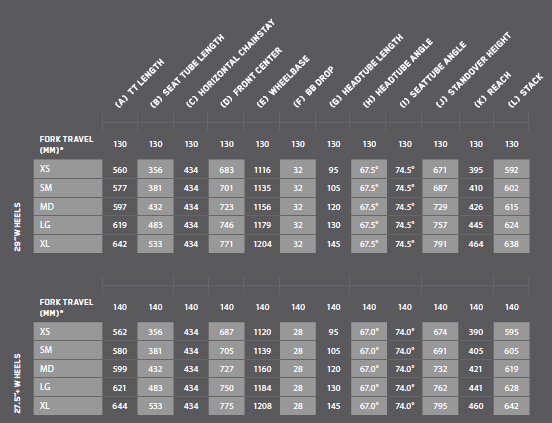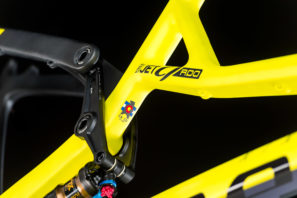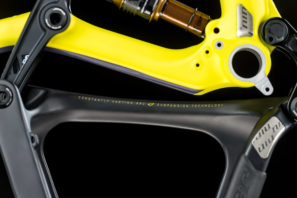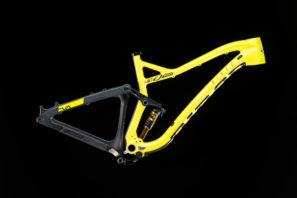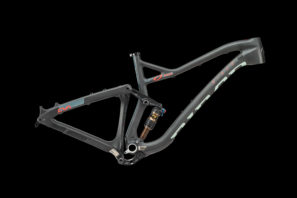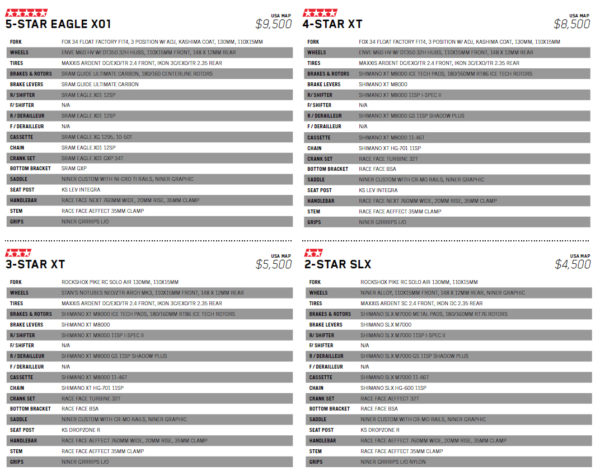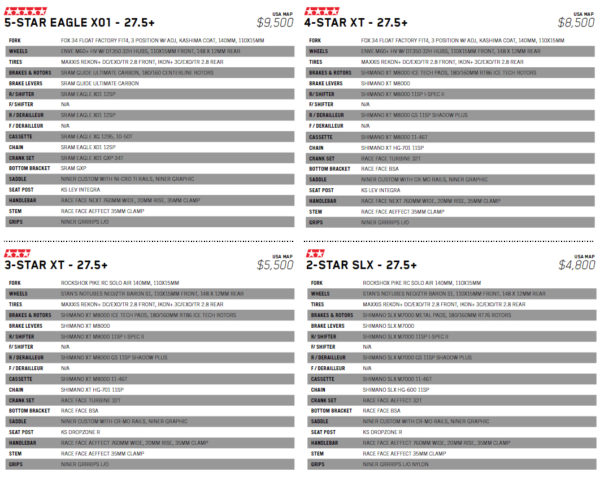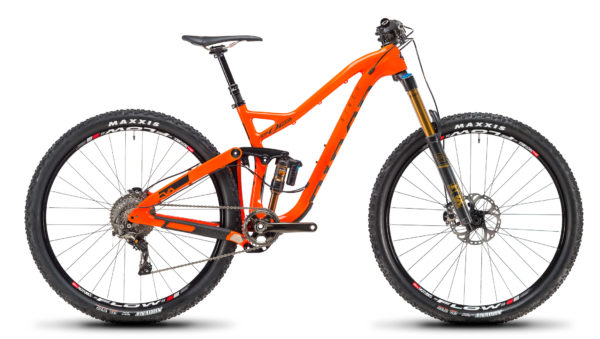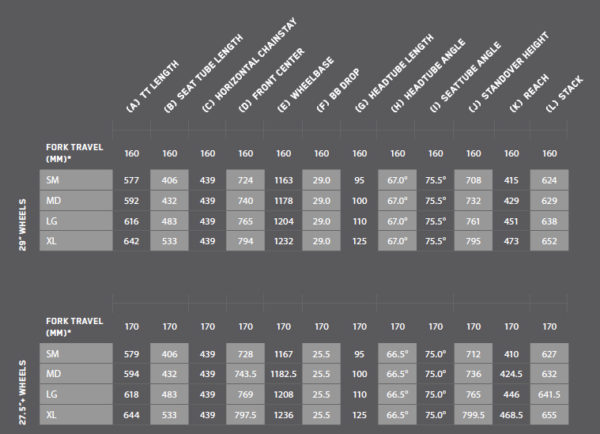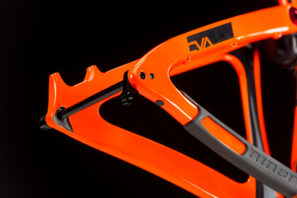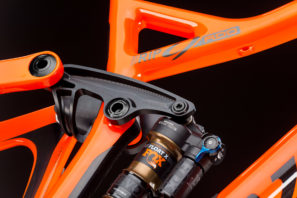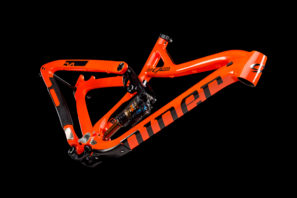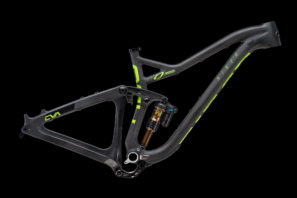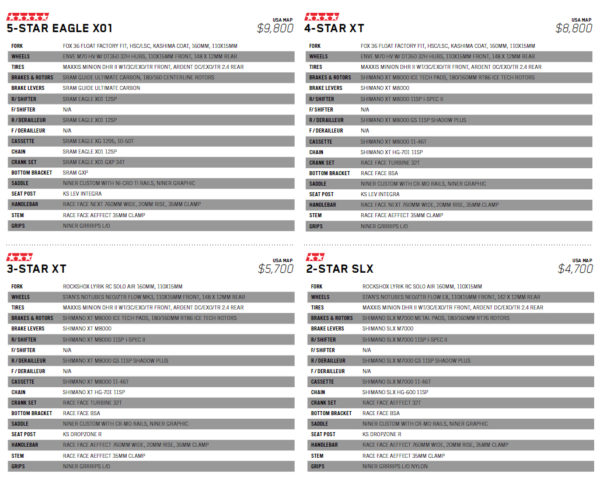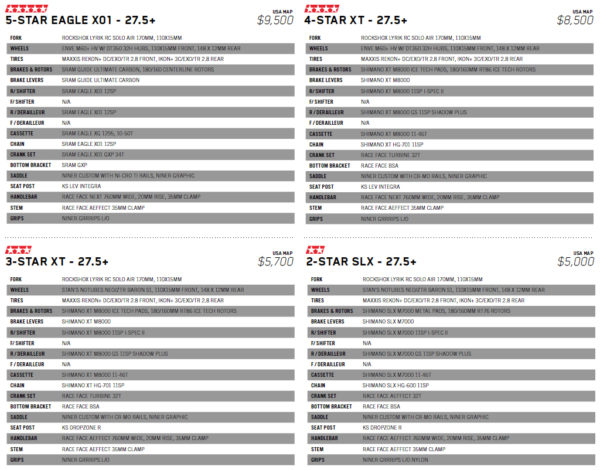It’s time for Niner to launch two completely new bikes. If you’ve been paying attention to current mountain bike trends, you probably know how this is going to go. Yes, the brand known as Niner will soon have two bikes capable of running wheels that are not 29″.
But that’s only part of the story.
More importantly, as Niner puts it, the new RIP 9 and JET 9 are the continuation of their “Big (R)evolution.” That encompasses both the evolution of their bikes and of the brand itself. This change started out with the new RKT 9 and continued with the AIR 9 as both bikes received new tech and modern geometry updates with shorter chainstays, longer reach, and a better ride overall. When it came time to redesign the bread and butter for their trail category, Niner wanted to offer consumers the best bike possible. If that meant going outside of the 29er box, then so be it. Frankly, when Niner came up with their “Niners only” tagline, Plus bikes weren’t even an option. Since then the company has expanded into gravel and cross with 700c wheels, Plus on the 29+ side, and now… 27.5+.
Using all of the engineering and development knowledge gained over the years building bikes around the big wheels, Niner is diving head long into the 27.5+ category with a mid-travel JET 9 and long-travel RIP 9. The results are still classically Niner, but offer a completely new way for the same brand to attack the trail…
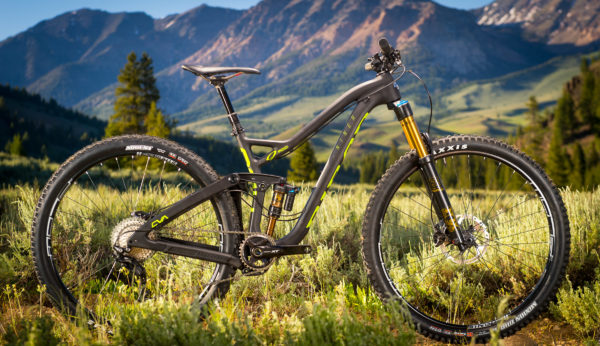
While most manufacturers seem to agree that Plus bikes have a place, they don’t seem to agree on how to go about building them. Initially, it seemed that the bikes were built with enough clearance to run the bigger tires but without much thought towards geometry. Then tire sizes seemed to stabilize around 27.5 x 2.8″ tires on 40mm rims and it was decided that the difference in effective diameter between that and a larger 29″ tire was enough to justify adjustments in the geometry. Some manufacturers have chosen to build bikes specific to one wheel size, some have used devices like headset spacers to adjust for the difference, and others like Niner have chosen to use different fork lengths to accomplish the same thing and raise the bottom bracket on the plus bikes and make them a bit more slack.
Niner’s new JET and Rip will be sold in stock form with both 29″ and 27.5+ versions – one of each for every build level. Depending on the rider and their needs for a trail bike, Niner feels that this ability to change wheel size is a feature customers are looking for as they search for every advantage they can get for their ride.
Both bikes continue with Niner’s CVA (Continuously Varying Arc) suspension design, and while they’ve been optimized for the new tire sizes and travels, the most important change in terms of allowing for the Plus tires seems to be the Boost 148mm spacing. Similar to Pivot’s story, Niner points out that without Boost spacing these bikes, or at least these bikes in Plus configuration, wouldn’t have been possible. Clearly, Pivot took it to the extreme with their 157 x 12 spacing, but Niner has managed to cram a ton of tire clearance plus the ability to run 2x on the JET (RIP is 1x only). Not only have the frames grown in tire clearance (up to 29 x 2.4″ or 27.5 x 3.0″), but they also managed to shorten the chainstays even further to 434mm.
In addition to more modernized geometry with longer top tubes & reach, lower BBs, shorter chainstays, and lower standover, both bikes grow in travel as well. The previous JET was 100mm at the rear while RIP was 125mm. And now? You’ll find 120mm rear travel paired with 130mm front (29″)/140mm front (27.5+) for the JET and 150mm rear travel matched with 160mm front(29″)/170mm (27.5+). The longer forks included with the Plus builds are Niner’s way of raising the bottom bracket to accommodate in the wheel size difference while slacking out the head angle by 1/2º as well.
Each bike is fully clad in carbon fiber which makes full use of Niner’s RDO Carbon Compaction method – their name for the use of EPS mandrels inside the carbon in the molds. The EPS allows for better compaction of the carbon with more precise wall thickness, fewer voids & wrinkles, and less excess resin, and after molding the EPS is removed from the frame. Additional stiffness for the RIP has been added through a one piece rocker link with a connecting brace between the two sides at the back of the link as well as larger bearings and bigger pivot hardware.
Adding to the frames’ versatility is the Swiss Army knife of a bottom bracket assembly. Around the 73mm threaded bottom bracket shell you’ll find ISCG 05 mounting tabs, and front derailleur mounts for the JET. There are also two windows to the inner depths of the frame which are covered during use by the downtube carbon protector and a plug under the bottom bracket. The front window is useful in routing internal cabling, while the rear functions as a storage area for a Di2 battery – though take note that in Di2 guise, only 1x applications are supported for both bikes. Boost spacing for chainrings and spiders is recommended for both models with 36t the max chainring size for 1x applications, and the JET capable of running 26/39t SRAM or 28/38 Shimano doubles.
Additional frame protection is offered through titanium chain strike plates and a molded rubber chainstay protector.
During our time with Niner in Sun Valley, ID, the bikes that were set up in the Plus configuration were also giving us a sneak peek at the new Stan’s Baron Plus rim. To be sold as the stock rim for their 2 and 3 Star builds, very few details were given on the new rim other than the fact that it’s essentially a wider version of the Flow Mk30. Full details will be revealed as we approach Eurobike.
Aimed squarely at the trail segment, Niner’s new JET 9 should fit right in with 120mm rear travel with either 130mm (29) or 140mm (+) forks.
Offered in two colors, the bright option actually looks really good in person with a matte yellow finish. The dark option is certainly more muted with red and grey accents.
Builds will be available in 2-to-5 star options with pricing ranging from $4,500 – $9,500. On the 4 and 5 star bikes you’ll see the use of ENVE carbon wheels with color matched decals and Fox suspension, with aluminum wheels and RockShox suspension for 2 and 3 stars. Compared to the RIP 9, the JET 9 gets an XS option added with sizes up to XL.
It’s a similar story for the RIP 9 with two frame colors available – bright orange or matte black with neon green accents. It should be noted that all frame hardware will now come in black so there won’t be any contrasting red bits throughout the bike. A true long travel 29er with 150mm of rear travel matched with a 160mm fork, the RIP 9 gets even longer travel up front with a 170mm travel fork for the Plus configuration. Because of that, all of the Plus bikes will ship with RockShox forks since 170mm travel Plus options aren’t yet available from Fox.
Pricing will range from $4,700 – $9,800 depending on the model with sizing from S-XL. Both bikes will be shipping to dealers starting in August.
Look for our first ride impressions soon!
